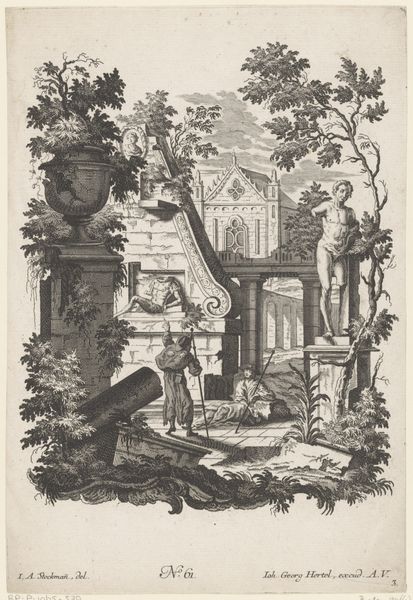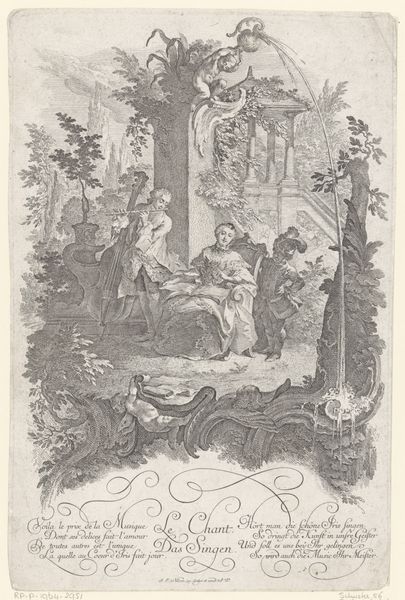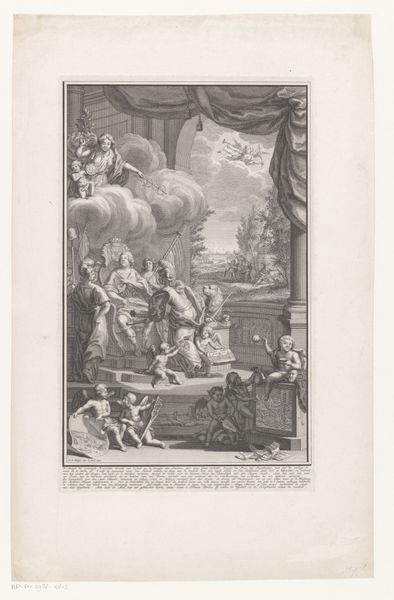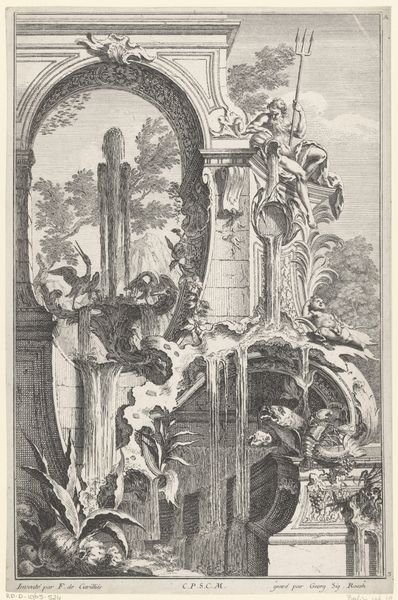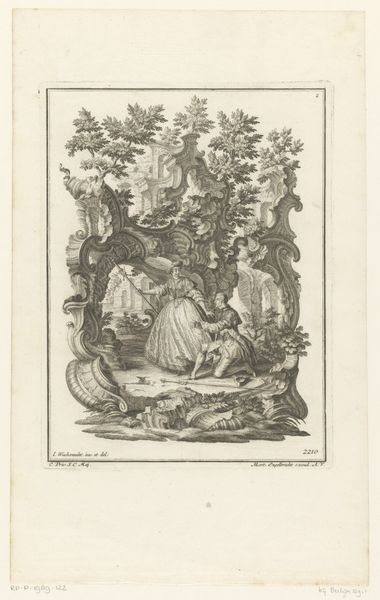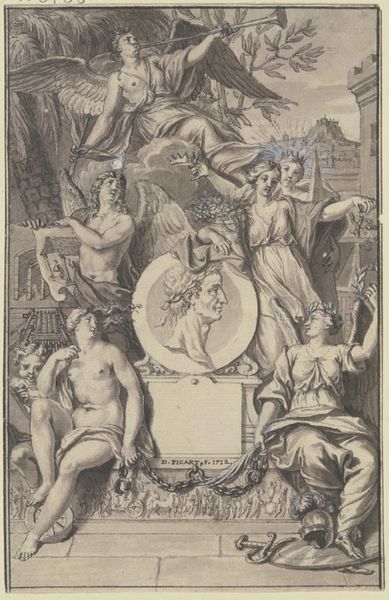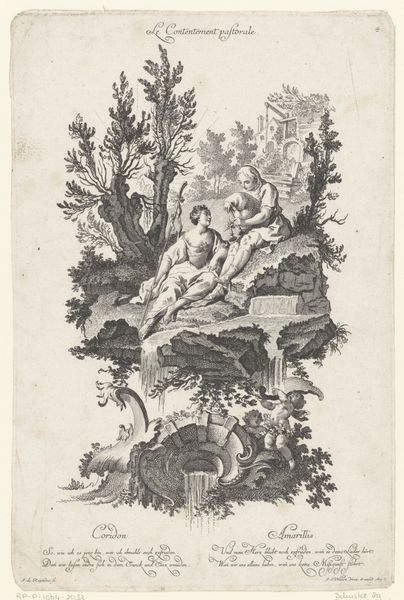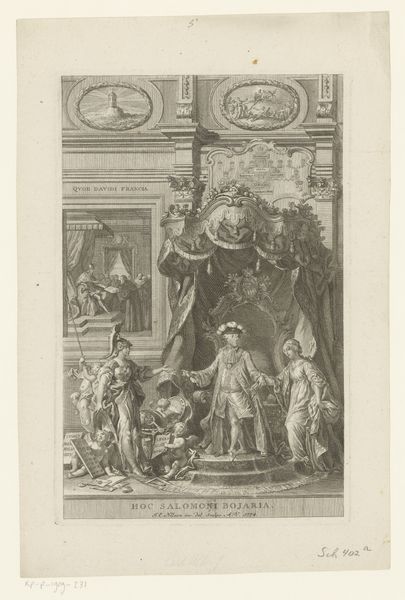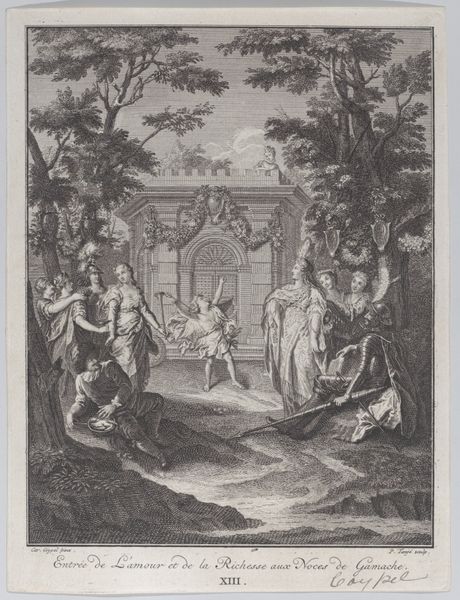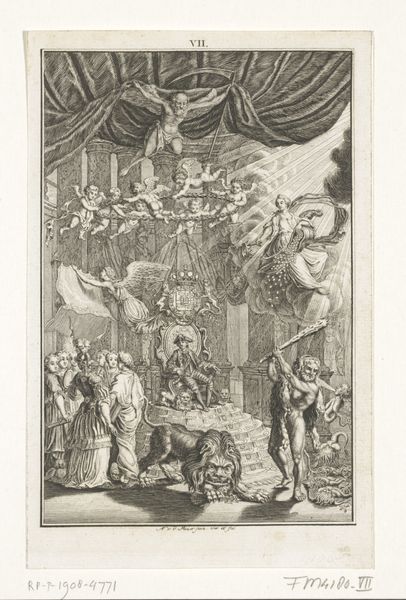
Huwelijksprent voor Hendrik Pieter van Beek en Maria Aletta Vermande, 1738 1738
0:00
0:00
janpunt
Rijksmuseum
drawing, print, engraving
#
drawing
#
ink drawing
#
allegory
#
baroque
#
pen drawing
# print
#
landscape
#
figuration
#
line
#
history-painting
#
engraving
Dimensions: height 240 mm, width 195 mm
Copyright: Rijks Museum: Open Domain
Editor: Here we have a marriage print made in 1738 by Jan Punt for Hendrik Pieter van Beek and Maria Aletta Vermande. It's an elaborate ink drawing with engraving. The whole thing has a staged, theatrical feel, very Baroque, but I’m struggling to decode it all. How do you interpret this work? Curator: What strikes me is the overt performance of power and privilege. Look at the landscape – controlled, manicured. This isn’t just about celebrating a union, but about announcing status within a rigid social hierarchy. Who is invited to the wedding and what their family represents matters here. The print serves as propaganda. Do you see how the allegorical figures further reinforce that? Editor: I do now. I was focusing on the landscape scene itself, with what looks like figures in classical dress and winged cherubs, and missed that element completely. But is that all there is to it? Surely, there's more to a marriage than just status. Curator: Certainly. The inclusion of Cupid points towards love and destiny, elements that often get co-opted into these performative statements. Think of it as navigating the social constructs around marriage. This work reveals not just joy, but the prescriptive roles that people were expected to occupy within Dutch society. Do you see any potential tensions within these symbolic displays? Editor: Yes, there is some degree of discomfort knowing the artwork reduces relationships to symbols of status, as it erases what makes a relationship real for a couple, like love, growth, arguments... The picture looks beautiful but artificial. Curator: Precisely! This piece becomes a valuable point of entry to broader dialogues about gender, social class, and individual agency in the 18th century. Editor: I see how it functions almost as a cultural artifact revealing social conventions. Thanks for the insight! Curator: My pleasure! Analyzing visual cues and social themes gives voice to overlooked elements of social history.
Comments
No comments
Be the first to comment and join the conversation on the ultimate creative platform.
